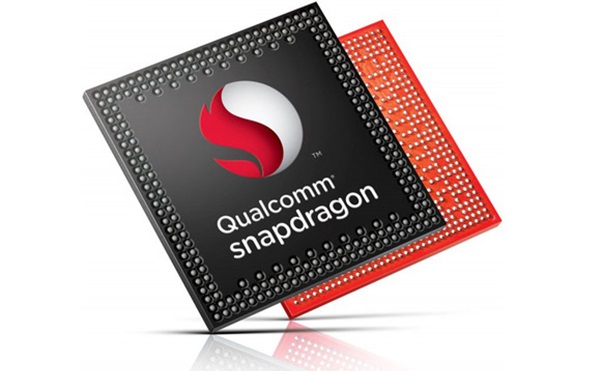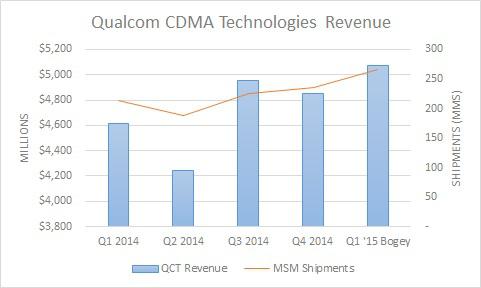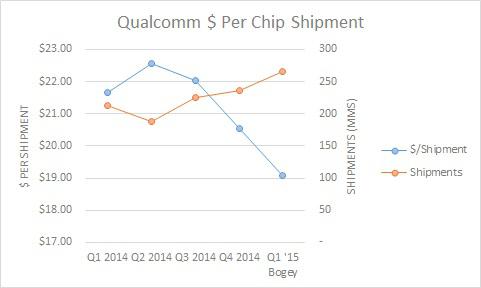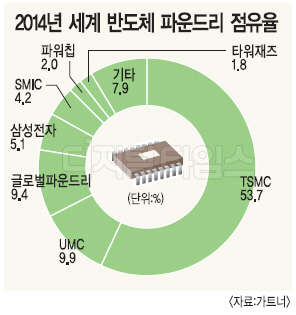지금까지 퀄컴이 독점공급했던 아이폰에 Iphone 6S부터 인텔이 50% 정도 공급하는 vendor로 참여하게 됐습니다. 인텔입장에서는 오래동안 숙원사업이 이루어진것이고요, 독점지위를 유지하던 퀄컴은 또다른 매출 쇼크를 맞게 됐습니다. 다행히 모뎀은 매출 기여도는 높지만 순이익 기여도는 낮아서 다행인 면이 있습니다.
Iphone 6S, 6S plus, 6c(아직 정확하진 않지만) 어떻게 퀄컴과 인텔이 나눠가질지 궁금한데, 지금까지 뉴스로는 주요 시장은 퀄컴칩으로 아시아나 남미시장은 인텔칩으로 간다는 얘기가 있습니다.
인텔은 애플과의 계약으로 인해 내년에 $1B($750Mㅡ - $1.25B)정도 매출에 도움이 될거라고 합니다.
------------------------
Intel modems may be in up to half of next-gen iPhone shipments, analyst estimates
Chipmaker Intel may have won as much as half of the orders for modems in Apple's next-generation iPhones shipping this fall, an analyst with Northland Capital Markets claimed on Wednesday.
Apple has been considering an Intel modem "for a while," according to Gus Richard, who didn't identify a specific chip in an investor memo. In March a report sugested that Apple would use Intel's XMM 7360 LTE modem, but only in 2016 and for markets like Asia and Latin America.
Assuming a 50 percent order share, Richard suggested that Intel could generate an extra $750 million to $1.25 billion in revenue during 2016.
"This is a marque win for Intel and would go a long way to reducing the mobile business losses," he wrote.
Although Intel is an overwhelming force when it comes to desktop, laptop, and server processors, the growth of smartphones and tablets has undermined it financially. Most smartphones are based on processors with ARM architecture, including the iPhone, although Apple performs heavy customization to suit its needs.
Modem production is likely well underway for upcoming iPhone models. Apple may announce the new devices as soon as September 9, and launch them later in the month — typically, the company needs between one and two months of non-stop manufacturing to build up launch stock.
It's still uncertain whether there are only two new models planned — commonly referred to as the iPhone 6s and 6s Plus — or if Apple is also working on an iPhone 6c, which might potentially revive the 4-inch display size used for the iPhone 5, 5s, and 5c.
http://appleinsider.com/articles/15/08/12/intel-modems-may-be-in-up-to-half-of-next-gen-iphone-shipments-analyst-estimates
------------------------
Analyst: expect Intel LTE modems to find their way in up to 50% of Apple's iPhone 6S shipments
According to an analyst from Northland Capital Markets, we might be in for one of the strangest of partnerships between two tech giants next month. If a new report is to be believed, half of the phones from the upcoming iPhone 6S series will make use of Intel 4G LTE modems.
Gus Richard, an analyst with North Capital Markets, recently stated that Intel has won orders for half of Apple's iPhone 6S and iPhone 6S Plus shipments. According to Apple Insider, this information lines up well with reports dating back in March which claimed that Apple is planning to integrate Intel's XMM 7360 LTE modem in the iPhone 6S series units that will be sold in markets around Asia and Latin America.
Although Intel dominates the processor market when it comes to traditional computing machines such as desktops, laptops, and servers, Intel's mobile arm has been reporting huge financial losses during the past years. Reports claim that Intel has been heavily subsidizing its tablet processors in an attempt to catch a foothold among entry-level tablet makers in China, although Chipzilla has been unable to compete with ARM designs, either stock or custom, which find their way in the vast majority of smartphones and tablets models.
According to Richard, this new deal with Apple will translate into a substantial revenue for Intel during 2016, one that will help alleviate some of the pain of its mobile division. The analyst estimates that Intel could generate somewhere between $750 million and $1.25 billion in revenue, which "would go a long way to reducing the mobile business losses". These are good revenue numbers, and Intel will surely welcome the cash despite the fact that company is primarily a processor designer and manufacturer, not a company that specializes in LTE modems.
If this report is accurate, chances are that Intel is currently hard at work manufacturing LTE modems for the first batch of iPhone 6S and iPhone 6S Plus shipments, as multiple reports hinted that Apple's supply chain has already started mass manufacturing components for the next iPhone generation. According to recent reports, Apple will unveil the iPhone 6S generation on September 9, with commercial availability estimated to arrive later in the month. While the iPhone 6S and the iPhone 6S Plus are a lock for this fall, it remains to be seen if the often-rumored iPhone 6C will see an unveiling next month along the two premium smartphones.
http://www.phonearena.com/news/Analyst-expect-Intel-LTE-modems-to-find-their-way-in-up-to-50-of-Apples-iPhone-6S-shipments_id72574#SB6XxJ77TZxwIuYt.99
------------------------
'IT이야기' 카테고리의 다른 글
| 치킨게임` 주도한 중국 LED 시장, 산업 위기 ‘부메랑’으로 돌아와 (0) | 2015.08.17 |
|---|---|
| 퀄컴 CSR 인수 완료 (0) | 2015.08.17 |
| 퀄컴 스냅드래곤 S820 스펙 (0) | 2015.08.17 |
| 윈도우 10 용 노트북 (0) | 2015.08.12 |
| 우버 이후 헬스케어도 우버화 될듯 (0) | 2015.08.12 |












































